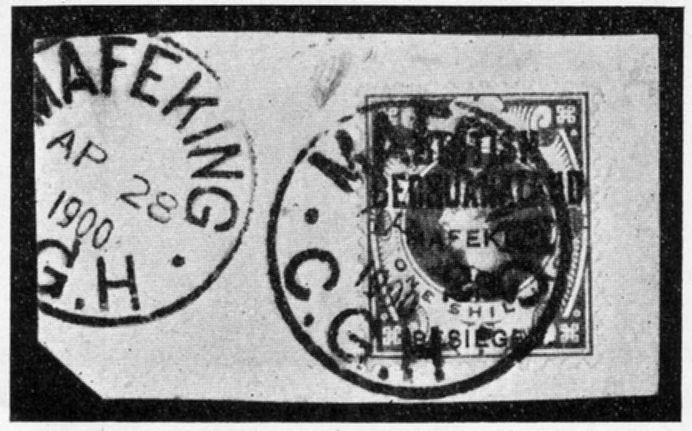
The wars between the British Empire and the South African Boers produced many interesting postal oddities.
Transvaal
Transvaal
The stamps of the Transvaal illustrate the important changes through which the country passed during the wars between the British and the Boers. The first illustration represents an early stamp of the Republic, while the next figure is an example denoting the annexation of the country by the British in 1877.
There are several types of the "V.R. Transvaal" overprint, as follows.
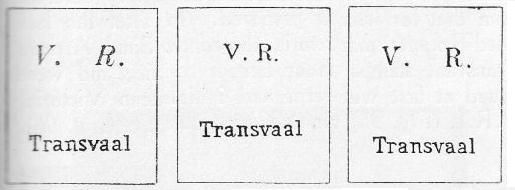
These were followed by stamps bearing the portrait of the British Sovereign.
A great blow to British prestige was struck in 1881, and the result of the disaster of Majuba Hill was the establishment of a Second Republic which in its turn overprinted the Queen Victoria stamps with a Dutch inscription "Een Penny", subsequently returning to the original Arms design of South African Republic stamps.
Just before the outbreak of the second South African War in 1899 the ascendancy of President Kruger had led to the ambition to see his features depicted upon the postage stamps of his country, and a new stamp design was prepared for this purpose, and a special paper was manufactured watermarked Z.A.R. (Zuid Afrikaansche Republiek) as illustrated below. But the stamp was never issued, and the quantity of the "Z.A.R." paper was sold and used for purposes very different from that for which it was prepared.

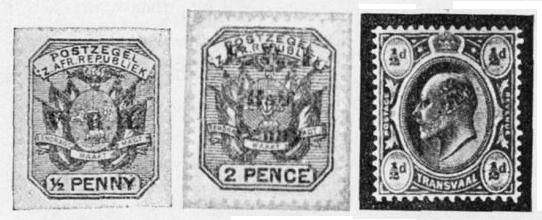
In 1900, after the late Lord Roberts' march to Pretoria, the contemporary South African Transvaal stamps came under British control again, and were issued at first with the overprinted initials of Queen Victoria, V.R.I., and later of King Edward, E.R.I. These were superseded in due course by the London printed issue of Transvaal stamps bearing the portrait of King Edward.
Orange River Colony
The stamps of the Orange Free State were successively overprinted "V.R.I." and "E.R.I.", and later on new stamps were issued with the portrait of King Edward.
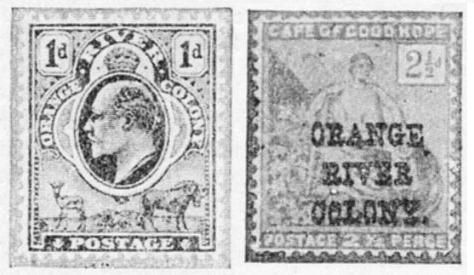
Cape of Good Hope stamps were also used in the new Colony with a special overprint reading "Orange River Colony".
A sixpence blue stamp of the Orange Free State was in readiness for issue at Bloemfontein when the British forces took over the control, and a few of these escaped the "V.R.I." overprint. The stamp is familiar to collectors with the overprint, and strictly speaking, without the overprint it has no record of postal use.
A type-set label was issued by the Orange Free State early in the war to indicate the franking of official correspondence probably on military service. The stamp has a border of fancy type ornament and simple type inscriptions in three lines "IN DIENST—R.D.M.—O.V.S."
The so-called "Commando Brief" stamp alleged to have franked the correspondence of burghers on commando is a bogus production.
Lydenburg
During the temporary occupation of this South African Republic Town in September, 1900, the stamp commemorative of penny postage was surcharged "V.R.I. 1d." and the ordinary Transvaal stamps were locally overprinted "V.R.I.". The values are ½d. green, 1d. carmine and green, 2d. brown, 2½d. blue, 3d. on 1d. carmine and green, 4d. sage green and deep green, 6d. lilac and green, 1s. ochre and green.

Mafeking
During the memorable siege of Mafeking, a Bechuanaland town but under the Cape postal administration, arrangements were made for a local post, and for occasional transmission of letters to Cape Colony, Natal, Rhodesia, and the United Kingdom. The postal arrangements of the town had only been transferred to the Cape Colony shortly before the siege, a fact which explains the variety of Bechuanaland and Cape stamps available in the town during the siege.
Payment of postage at the special rates chargeable for the service in the town and beyond was payable in the stamps of either "British Bechuanaland," "Bechuanaland Protectorate," or of the Cape overprinted "Mafeking—Besieged," and the new value. As will be noticed from the illustrations, the Bechuanaland stamps were chiefly created by overprinting the name "BRITISH BECHUANALAND" or "BECHUANALAND PROTECTORATE" on English stamps.
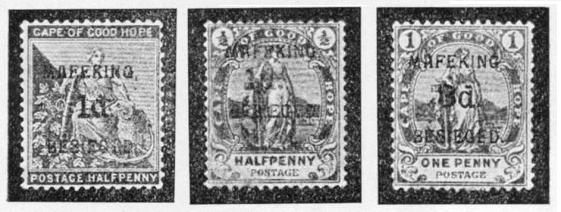


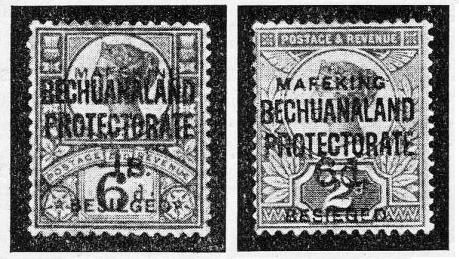

The foregoing stamps were chiefly used for letters sent by native runners who had to dodge through the enemy's lines and get either to Buluwayo in the north or Kimberley in the south. A special penny and a threepence stamp were prepared by a photographic process in the town, and these form the most interesting philatelic souvenirs of the South African War. The penny stamp, designed by Dr. W. A. Hayes, shows a portrait of Sergeant-Major Goodyear, of the Cadet Corps, and there are two sizes of threepence stamp, designed by Captain Greener, the Chief Paymaster, showing a portrait of the gallant defender of Mafeking, General Baden Powell.
Pietersburg
This town in the north of the Transvaal provided an interesting set of type-set provisional stamps during the Boer occupation, from March until April 9, 1901, when the British troops occupied the town and district. The stamps, which were but roughly printed in the office of De Zoutpansberg Wachter in the town, are inscribed "POSTZEGEL" at top "Z. AFR. REP." at each side, and "1901" at foot. The value is expressed in figures and word in the rectangular opening of the frame of printer's rule. The values issued were ½d. green, 1d. rose, 2d. orange, 4d. blue, 6d. green, and 1s. yellow, and owing to the crudity of the printing, specialists find a very extensive range of minor technical varieties amongst this issue of six denominations.

Rustenburg
After the relief of the British garrison by Baden Powell's force in June, 1900, the British hand-stamped South African Republic stamps with the sans serif initials V.R. in violet, the values known being ½d. green, 1d. carmine and green, 2d. brown and green, 2½d. blue and green, 3d. purple and green, 6d. lilac and green, 1s. ochre and green, 2s. 6d. dull violet and green.
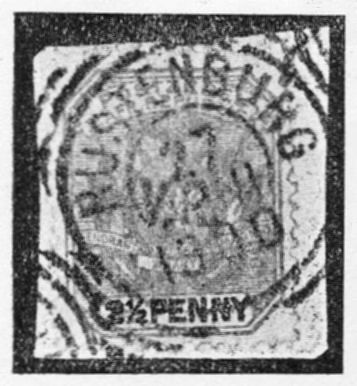
Schweizer Renecke
This Transvaal hamlet, in which a British force under Colonel Chamier was besieged from August 19, 1900, to January 9, 1901, overprinted some Cape of Good Hope ½d. and 1d. and Transvaal ½d., 1d., 2d., and 6d. stamps with a handstamp, reading "BESIEGED" in violet, but this scarcely alters the postal status of the stamps.
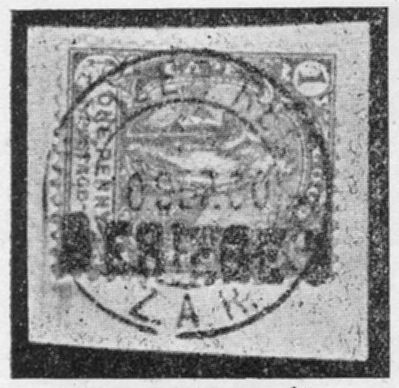
Volksrust
Here also in June, 1900, a number of Boer stamps were overprinted "V.R.I." in serif letters. The stamps used for the overprinting were fiscal stamps, converted for postal use by the overprint "POSTZEGEL" (postage stamp). The values overprinted V.R.I. were 1d. pale blue, 6d. carmine, 1s. olive-bistre, 1s. 6d. brown, 2s. 6d. purple.
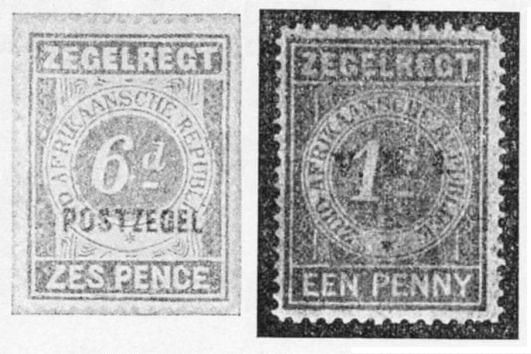
Vryburg
In November, 1899, the Boers occupied this town in Griqualand West, and they surcharged some of our Cape Colony stamps in stock there with the initials of the South African Republic (Z.A.R.) and a new value.
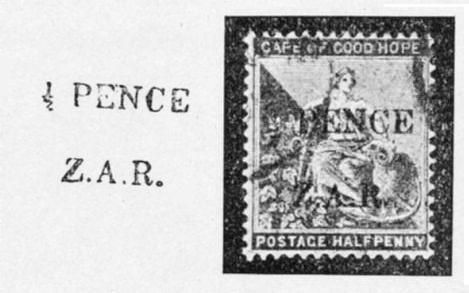
The town was retaken by the British in May, 1900, and certain stamps of the South African Republic left behind by the Boers were overprinted with an English inscription.

Wolmaranstad
Occupied by the British in June, 1900, the available South African Republic stamps having the Dutch name overprinted "Cancelled" and the addition of the sans serif letters, separated by hyphens "V-R-I." in blue and red. The values are the ½d., 1d., 2d., 2½d., 3d., 4d., 6d., and 1s. of the regular South African stamps, and the 1d. red commemorative stamp, in which, however, the word cancelled is in a square, script type.
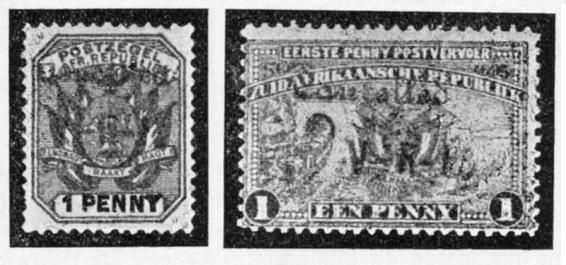
Union of South Africa
It was fondly regarded as the settlement of British and Boer troubles in South Africa when the former belligerents in the Transvaal, Free State, Natal, and Cape Colony combined to form the Union of South Africa. The opening of the Union Parliament was commemorated in a special stamp, the first to bear the portrait of H.M. King George V. after the decease of King Edward.
 132 133
132 133This has since been followed with a complete issue of Georgian stamps for the whole of the Union.
South Africa in 1914
Special marks were used on letters of General Botha's loyal forces against the rebels, and against German raiders. The first is the handstamp struck in violet of an official regimental frank. The army base and field post offices have their postmarks of the pattern indicated in, and the censor label illustrated is printed in violet, apparently in sheets which before use are endorsed with a black mark of concentric circles bearing an inscription of which only a portion shows on each label, and of which we have only seen an undecipherable part.
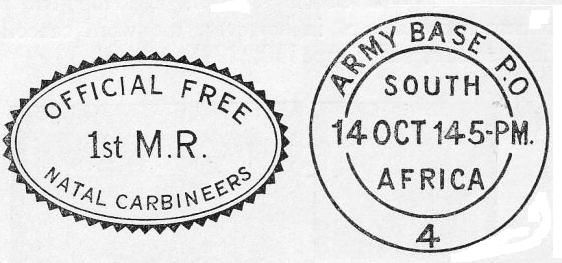
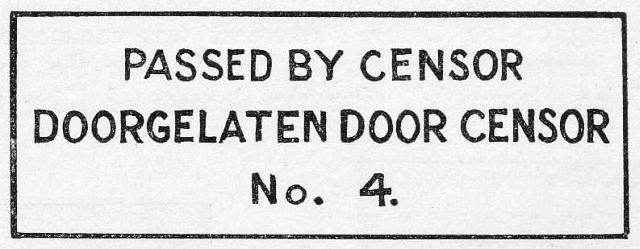
All three of these were used on a letter from a member of the South African Scottish regiment at Luderitzbucht in German South-West Africa.
Includes edited excerpts from The Project Gutenberg EBook of The Postage Stamp in War, by Fred. J. Melville
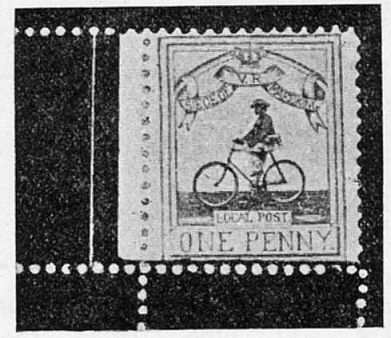
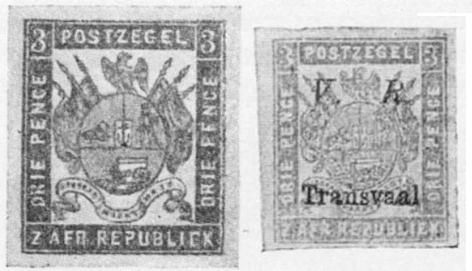
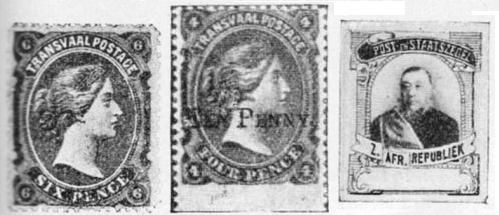
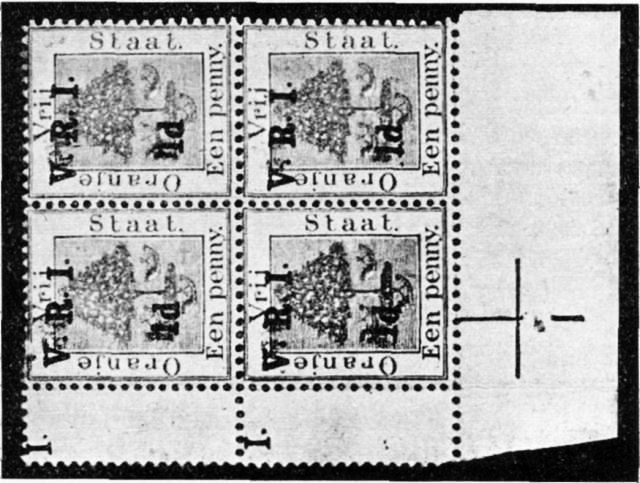

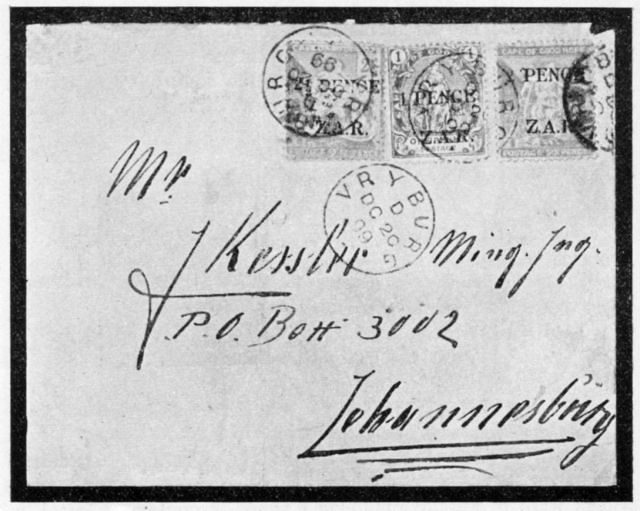
No comments:
Post a Comment